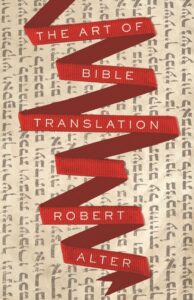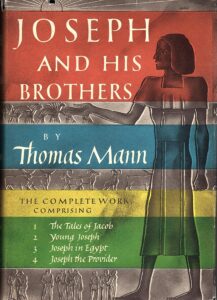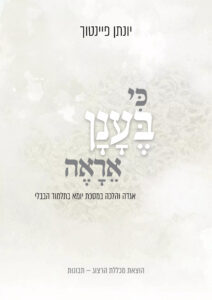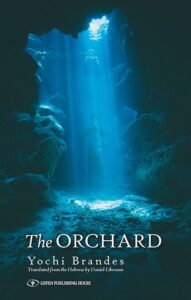TRADITION’s 2021 Book Endorsements – Part III
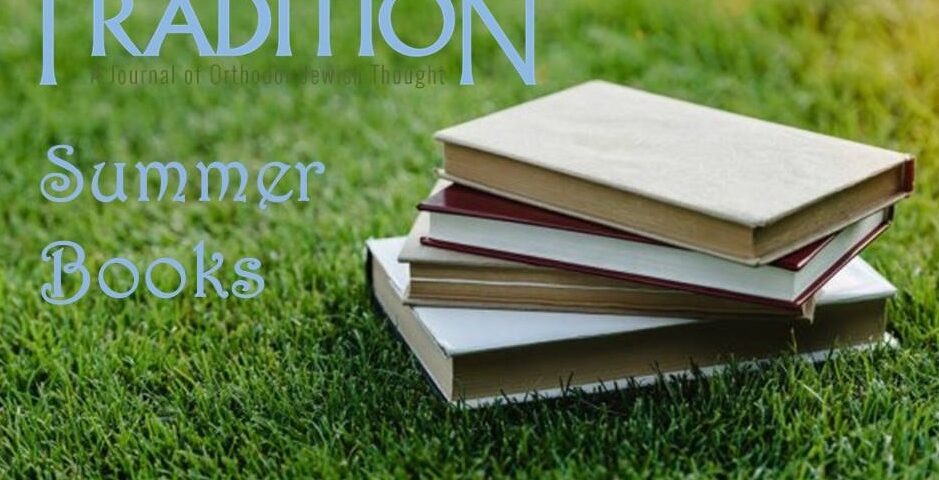
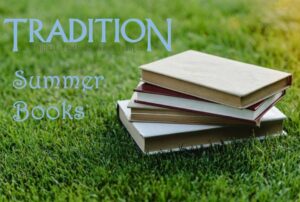 TRADITION concludes this year’s installments of our Editorial Board’s selections for recommended summer reading.
TRADITION concludes this year’s installments of our Editorial Board’s selections for recommended summer reading.
Read the third and final round of recommendations below (or visit Part I and Part II).
Congratulations to Rabbi Jesse Shore of Tenafly, NJ, for correctly predicting the highest number of books to appear on this year’s list. Enjoy your prize winnings – a year’s subscription to TRADITION. Join him!
Robert Alter, The Art of Bible Translation (Princeton University Press)
Yitzchak Blau
In the same year that Robert Alter completed the remarkable feat of single-handedly translating the entire Tanakh, he also published a small volume outlining his principles for translating scripture which educates towards more sensitive reading of biblical narrative prose. For example, sentence structure truly matters. Biblical Hebrew usually places the verb before the subject. Thus, when the subject comes first, a method Alter calls “fronting,” it powerfully highlights the subject. When Jacob calls out: “Me you have bereaved” (Genesis 42:36), he promotes himself as a paragon of grief. So too, Ehud does not greet Eglon with the honorific “O King” but purposely avoids giving the Moabite monarch that honor by placing the title at the end of the sentence (Judges 3:19). Alter notes translators who miss this significance by reversing the order.
Many translators edit out parataxis when Tanakh begins a series of sentences with the “vav” for “and.” Alter sees a versatile usage of this form with it conveying both the rush of Rebecca’s hospitality (Genesis 24) and the harmonious order of the first creation account (Genesis 1). Countering the contention that this technique does not work in English, Alter points to James Joyce’s use of it in Molly Bloom’s soliloquy in Ulysses. This illustrates his larger point that biblical scholars would be well-served by knowing something about world literature beyond their narrow field of specialization.
Understanding the precise resonance of each word is crucial. Joseph accuses his brothers of coming to see “ervat ha-aretz” (Genesis 42:9). A translator who writes “the country’s weak parts” misses out on the sense of the land “as a vulnerable female entity with secret parts that should not be exposed and of spying as a kind of violation.”
Alter adamantly attempts to preserve wordplay even at the cost of precision. In Isaiah 7:5, the prophet states: “And he hoped for justice [mishpat] and, look, a blight [mispah], / for righteousness [tzedaka], and, look, a scream [tze’aka].” The preceding translation totally loses the poetry of the original. Alter’s translation reads: “And he hoped for justice, and, look, jaundice, / for righteousness, and, look, wretchedness.”
The subtlety of biblical writing emerges forcefully. Esau saying ha-adom ha-adom ha-zeh (Genesis 25:30) reveals his impetuous and impatient nature as he cannot bother to think of the food’s real name. Alter translates this as that “red-red stuff” conveying how Esau speaks like “a toddler, or someone who barely knows the language.” Translators who miss the doubling effect diminish the force. Similarly, translators who fix Ahimaaz’s confused response to David miss the point (II Samuel 18:29). The flustered messenger does not know how to tell the king about Absalom’s death and the confused language is purposeful.
Finally, Alter notes some common errors, such as translators who confuse biblical and rabbinic Hebrew. “Nefesh” in the bible means “essential self” and not soul, and the livyatan of Job 3:8 is the leviathan and not mourning (as in the word levia). Other mistakes come for timid translators. Hagar does not lay Ishmael down under one of the bushes; rather, she flings him (va-tashlekh, Genesis 21:15).
A short summary does not do full justice to this illuminating work. My only critique is that the volume could render itself obsolete. After reading about the resonance of word choice and the play of language in biblical prose style, a reader would justifiably decide that Tanakh must be read in the original Hebrew!
Ilana Kurshan, If All the Seas Were Ink: A Memoir (St. Martin’s Press)
Sarah Rudolph
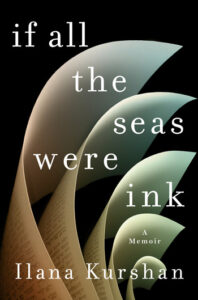 If summertime reading evokes images of lounging on a beach with a light page-turner, a book about Gemara might seem an unlikely choice. Then again, Ilana Kurshan’s book about Gemara, If All the Seas Were Ink, is itself unlikely: An unlikely pairing of two recent trends, at least one of which is itself unlikely— memoir and Daf Yomi.
If summertime reading evokes images of lounging on a beach with a light page-turner, a book about Gemara might seem an unlikely choice. Then again, Ilana Kurshan’s book about Gemara, If All the Seas Were Ink, is itself unlikely: An unlikely pairing of two recent trends, at least one of which is itself unlikely— memoir and Daf Yomi.
On the memoir side, if readers are looking for a thoughtful, honest, and at times painfully raw, reflection on the ups and downs of life, Kurshan certainly delivers. The book is engaging and draws the reader in, at every turn of a page, to cry or celebrate with the author and to find those piercing insights and threads of relatability that make memoirs so enticing.
And unlikely or not, the Talmud turns out to serve as an excellent backbone for Kurshan’s exploration of her life—largely, but not only, those years during which she turned a daily page to complete her study of Daf Yomi. Those who think of Talmud as archaic will be proven sorely mistaken, as Kurshan seamlessly weaves all sorts of references into her tale, from brief, misleadingly simple quotations to larger-scale themes. (A lifelong student of literature, Kurshan also includes a heavy dose of wider literary references and connections.) Ritual, legal, exegetical, and philosophical texts, to the extent that such categories can be defined, all turn out to hold deep relevance to the big and small moments of a modern life. For the writer, these included a difficult marriage and divorce as a new Israeli immigrant, dating, remarriage, and the births of three children. And through all that, she writes, she never missed a day of Daf Yomi.
When I was single, I learned over dinner, careful not to drip tomato sauce upon discussions about the sprinkling of blood on the Temple altar…. After our children were born… in bed, falling asleep with the rabbis still arguing in my head about just how late a person can recite the bedtime Shema prayer.
A reader might wonder at the serendipity of Kurshan so often studying any given sugya precisely at a moment which so fittingly aligns with events in her life and features of her day. But that’s the way it is with Torah study—when one is immersed in the sea of Talmud, or any other learning for that matter, connections indeed abound.
And therein lies an area of relatability and impact that might be too easily overlooked in the context of the particular (and deserved) hype surrounding the enterprise of Daf Yomi. In a broad sense, Kurshan’s work reminds us of the abiding relevance of Torah writ large; it reminds us that whatever we learn, on whatever schedule, there are all sorts of meanings and connections to uncover, no matter how unlikely, page after page.
Maimonides’ Guide of the Perplexed: A Critical Guide, edited by Daniel Frank and Aaron Segal (Cambridge University Press)
David Shatz
The book at hand is the first collection of scholarly essays in English devoted entirely to the Guide of the Perplexed. The series to which it belongs, “Cambridge Critical Guides,” honors the Moreh Nevukhim by placing it in the company of approximately thirty-five major works by Plato, Aristotle, Hume, Hegel, Kierkegaard, Wittgenstein, and more. (The only other Jewish author represented in the series is Spinoza.) This is as it should be: not only has the Guide had an incalculable impact on Judaism, it also was cited and grappled with by luminaries of the non-Jewish world like Aquinas, Leibniz, and Hegel. Make no mistake: The Guide is largely about Judaism, but it is also a work of philosophy. And there is a growing appreciation of Jewish philosophers within Anglo-American philosophy.
(Full disclosure: I contributed an article on the problem of evil to this volume. TRADITION’s editor nonetheless encouraged me to write about the book as part of this feature.)
Opening with an essay by Daniel Frank on the Guide’s form and purpose, and ending with one on human perfection by Steven Nadler, the collection covers the territory comprehensively and very well, following the Guide’s sequence of topics. It is impossible to talk about all fourteen essays, so I’ll mention just a few illustrations of how the articles address familiar topics in creative ways.
Based on his treatment of good and evil in the Gan Eden narrative (Guide I:2), Maimonides is often construed as reducing morality and value judgments to mere social convention. After Shira Weiss closely analyzes that chapter, Daniel Rynhold investigates a set of categories for interpreting ethical statements, in order to ascertain the scope and limits of the “social convention” thesis. From this discussion he generates an approach to the prescriptions of halakha. Another vital work is Aaron Segal’s interpretation of Maimonides’ doctrine of negative theology—the idea that we cannot say what God is. Segal canvasses several objections to negative theology, and then offers an interpretation that makes it a less austere approach than commonly understood and that, he argues, solves the problems he posed. Warren Zev Harvey tackles Guide III:13, in which Maimonides seems to deny that the universe has a purpose. Harvey lucidly exposes contradictions in this “dizzying, conflicted, and audacious” chapter and ends with a surprising conclusion. Moshe Halbertal explores the topic of law—what makes a law divine, what gives it authority, and what are the implications of its manifesting wisdom.
The volume is addressed primarily to those who have some familiarity with the salient themes in Maimonides’ extremely perplexing guide. But anyone who works through the essays will acquire an excellent knowledge of the Guide’s twists and turns and contradictions, and will come to appreciate why Jews and non-Jews alike have found therein substantial philosophical value.
Gwethalyn Graham, Earth and High Heaven (J.B. Lippincott)
Judith Bleich
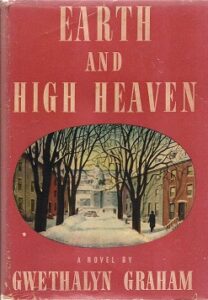 Although virtually forgotten today, when first published in 1944, Earth and High Heaven was a literary sensation, the first Canadian novel to soar to number one on the New York Times bestseller list, translated into 15 languages, and winner of the Canadian Governor General’s Award. Set in wartime Montreal, the book portrays a love affair between Erica Drake, a woman born into a prominent Anglo-Protestant family, and Marc Reiser, a Jewish lawyer, son of Ontario immigrants, and casts a spotlight on the prejudice and overt anti-Semitism that thwart their romance. Graham is forthright in depicting the tensions within Quebec society: “Hampered by racial-religious distinctions to start with, relations between the French, English and Jews of Montreal are still further complicated by the fact that all three groups suffer from an inferiority complex – the French because they are a minority in Canada, the English because they are a minority in Quebec, and the Jews because they are a minority everywhere.”
Although virtually forgotten today, when first published in 1944, Earth and High Heaven was a literary sensation, the first Canadian novel to soar to number one on the New York Times bestseller list, translated into 15 languages, and winner of the Canadian Governor General’s Award. Set in wartime Montreal, the book portrays a love affair between Erica Drake, a woman born into a prominent Anglo-Protestant family, and Marc Reiser, a Jewish lawyer, son of Ontario immigrants, and casts a spotlight on the prejudice and overt anti-Semitism that thwart their romance. Graham is forthright in depicting the tensions within Quebec society: “Hampered by racial-religious distinctions to start with, relations between the French, English and Jews of Montreal are still further complicated by the fact that all three groups suffer from an inferiority complex – the French because they are a minority in Canada, the English because they are a minority in Quebec, and the Jews because they are a minority everywhere.”
Neither of the protagonists has any strong religious convictions but they are confronted by implacable hostility to their relationship on the part of Erica’s father and the intolerance and bias in their social milieu. Erica comes to realize that “we Canadians don’t really disagree fundamentally with the Nazis. We just think they go a bit too far.” Despite its scathing indictment of anti-Semitism and xenophobia, the book does not descend into polemic. It is further redeemed by the author’s narrative skill and nuanced character depiction, leavened with witty and convincing dialogue. Erica’s aim is not reformation of society but personal fulfillment: “I know lots of people who are comfortably married… but they sit on opposite sides of the living room… and they might as well be sitting on opposite sides of the Atlantic…. What scares me most is not ending up on the wrong side of… the local conventions, but ending up on the wrong side of the living room.”
Graham herself was a vocal critic of Canada’s restrictive immigration policy and a lifelong passionate crusader against injustice and discrimination. In this novel she is not a proponent of intermarriage per se but rather an advocate articulating “a plea for the individual, that he or she may be regarded and respected as such, and not judged arbitrarily as a category.” Far better than any academic tome, this perceptive story illustrates an underlying truth: For intelligent, thinking individuals, absent theological considerations, there is no cogent reason to oppose intermarriage. In our own day as much of the prejudice dissipates (perhaps not yet in Quebec) intermarriage statistics inevitably rise. The only serious barrier to interfaith unions is a deep-seated and profound faith-commitment.
An eloquent and highly emotive counterweight to Graham’s book is With All My Heart, With All My Soul (1993) by B.D. Da’ehu, a pseudonym adopted by a rabbinic scholar of note. Singular in expressing the emotions and values of those to whom the very concept of intermarriage is beyond the pale, this latter work should, I think, be required reading for all rabbis called upon to sanction conversion for the sake of marriage. Hopefully, it will leave a mark upon the conflicted and provide support for those committed to upholding the standards of halakha.
Thomas Mann, Joseph and His Brothers
Lawrence Kobrin
If you really have the time and the setting for a very long book, I would urge the multiple volume work of Thomas Mann, Joseph and His Brothers. Originally published in German as four separate volumes starting in 1933 and continuing through the 1940s, the English version, translated by H.T. Lowe Porter, first began to appear in 1934 and went on to 1944. Mann had left Germany for Switzerland on the rise of Hitler but continued to write in German. My copy is a composite reprint which appeared in 1963, runs for 1207 pages, and weighs almost two pounds. It is not generally available but a more recent translation by John Woods, published in 2005, is in print. It runs for 1492 pages and weighs almost two and one-half pounds.
While Mann himself considered the Joseph volumes his greatest and favorite work, they are not his best known, most famous, or most cited in scholarly or cultural publications. He had won the Nobel Prize for earlier works in 1929 and other volumes have had much greater circulation and fame. Yet, for the readers of TRADITION, these volumes hold a special interest.
My first introduction to the Mann work was in a Shabbat afternoon talk by the author Herman Wouk in the 1960s. Seeking to emphasize the literary qualities of Humash, Wouk noted how compressed and concise biblical language and expression could be. Just a word or two in the parasha (that week was either Miketz or Vayigash) would take Thomas Mann 50 or more pages to portray and present. In writing this substantial expansion of the second half of Genesis, Mann drew on known midrashic sources, on secular Bible commentary, and on his own imagination, In reading, I have always been intrigued by an effort to associate a given exposition (which might run on for four or five pages) to a terse Rashi or Midrash.
If you can hold the book up while on the porch or at the beach, it is worth the effort. For the lazy, editions of the separate volumes continue to appear.
Michael J. Sandel, The Tyranny of Merit: What’s Become of the Common Good? (Farrar, Straus and Giroux)
Shalom Carmy, Editor Emeritus
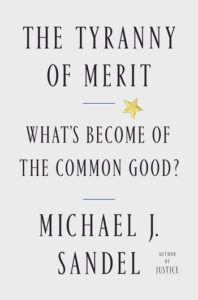 Economic egalitarianism has become a ruling ideal of the liberal elites that dominate our universities. Most upholders of the socio-economic status quo have pretty much ignored this orientation, whether because we feel a strong intuitive or selfish commitment to the way society has traditionally been organized or because we suspect the motives of ambitious egalitarians, or because we fear that the intended and unintended consequences of egalitarian social engineering will undermine freedom and initiative, marginalize religious believers and other minorities, or because we are reasonably confident that the elites will always ensure the persistence of their hegemony.
Economic egalitarianism has become a ruling ideal of the liberal elites that dominate our universities. Most upholders of the socio-economic status quo have pretty much ignored this orientation, whether because we feel a strong intuitive or selfish commitment to the way society has traditionally been organized or because we suspect the motives of ambitious egalitarians, or because we fear that the intended and unintended consequences of egalitarian social engineering will undermine freedom and initiative, marginalize religious believers and other minorities, or because we are reasonably confident that the elites will always ensure the persistence of their hegemony.
Despite the above, one cannot deny that a good society, from a religious and ethical perspective, would be more egalitarian and less market-driven, than our present situation. Can any God-fearing person today believe that worldly success is a criterion for social and moral authority? We should therefore be thankful for political theorists like Harvard’s Michael Sandel, who work within the liberal consensus but consistently raise important questions about it, questions that challenge its adherents and that encourage the rest of us to consider what features of egalitarianism can and should be incorporated into our own thinking and advocacy. Beginning with his 1998 Liberalism and the Limits of Justice, still one of the most important liberal critiques of John Rawls’ influential political philosophy, and through his televised lectures on justice, Sandel has been a trenchant critic who has focused on major points rather than technical debates and who has brought serious analysis to a large non-professional audience.
His new volume takes aim at the cult of educational merit in our universities and culture. All of us know that graduating from the “right” institutions is a great predictor and likely cause of increased earnings and social power. We know that these advantages are not always fair and especially that children from affluent, well-educated homes are much more likely to get into the “best” schools and exploit their opportunities once there. We know the resentment that inequality stokes in a divided and materialistic culture. One supposed solution is for the government and the elites to insert themselves in place of families and thus cancel the benefits of wealthy parents and book-lined, achievement-driven homes. Another would be an open admissions policy that, in effect, pretends to deny the head start by conferring “affirmative action” on the disadvantaged. Both approaches have clear and dangerous flaws that need not be pointed out here. At the same time, we should be troubled by the impact of unearned luck, both as a matter of fairness and pragmatically, as a system that wastes the talents of too many who lack advantages.
At one point, Sandel proposes the following: What if a certain number of spots at elite schools were reserved for students with genuinely high records of achievement. The remaining spots would be assigned by lottery, but only among those students whose records meet the threshold of success. Such a policy would guarantee quality—no students admitted who do not merit getting in; but the element of luck deriving from social status would be largely neutralized. Whether or not this idea and his other proposals is satisfactory or even workable, it represents the kind of thinking we, as religious Jews, in Israel or the United States, should engage with. We ignore it at our peril.
Yonatan Feintuch, Ki be-Anan Eira’eh: Aggada ve-Halakha be-Messekhet Yoma (Michlelet Herzog)
Avraham Walfish
“Halakha and aggada need to be united one with the other” (Rav Kook, Shemona Kevatzim 5:1). R. Dr. Yonatan (Tani) Feintuch’s new Hebrew book, Ki be-Anan Eira’eh, on the intersection of halakha and aggada in Bavli Yoma, is the most recent response to Rav Kook’s challenge. In his illuminating discussions of nine rabbinic narratives, Feintuch deftly combines the tools and perspectives characteristic of his different professional roles: scholar, educator, and rabbi. His close readings of these narratives employ the tools – philological, literary, and intertextual – developed in academic scholarship, in order to decipher their spiritual messages. This, however, is but a first step towards the search for broader themes and meanings, embedded in the context, both halakhic and aggadic, in which these narratives are situated, as well as the overarching themes he detects in the tractate as a whole.
Thus, for example, in the first sugya of the tractate, discussed in the book’s first chapter, pondering why some amoraim identify the model for the seven-day sequestering of the High Priest as Moshe’s ascent to the cloud on Sinai rather than Aharon’s confinement to Ohel Moed during the days of Miluim, he suggests that Moshe’s example is important for rendering study of the Yom Kippur sacrificial service relevant to the post-hurban world of the Talmud. Historical background serves Feintuch in other chapters as well, combining with close reading and intertextual techniques to shed new light on well-known themes, such as the critique of Second Temple priesthood in the narratives of the Sadducee High Priest’s improper incense offering and of the murder committed by a priest who lost the race for terumat ha-deshen. The attitude of Babylonian Jewry and their spiritual leaders towards redemption and restoration of the Temple is evaluated in a complex and sophisticated manner on the basis of a fraught encounter between Resh Lakish and Rabba bar bar Hanna (chapter 2), as well as a novel intertextual reading of the encounter between Shimon HaTzaddik and Alexander the Great (chapter 8).
The author, however, is never content with reading the stories within their literary and historical contexts. Several of the chapters focus squarely on spiritual and existential issues, such as the importance and drawbacks of lavish pomp and ceremony (chapter 6) and the ambivalent role of libido in the service of God (chapters 4 and 9). All of the chapters conclude the scholarly analysis with a section of “Hidhudim” (echoes), which seek to make the talmudic text “into part of our dialogue with the Torah and its Giver,” often referring to Hasidic masters, contemporary thinkers, and modern Hebrew poetry. The reader is, in turn, then invited to “additional echoes,” by means of questions designed to evoke reflection on how the ideas embedded in the sugya can impact on our lives.
Intending the book for a wide audience, the author wears his impeccable scholarship lightly, and highlights his educational and spiritual goals. His accessible and engaging style makes the book enjoyable, as well as informative and thought-provoking.
Yochi Brandes, The Orchard (Gefen Publishing)
Mark Gottlieb
The literary genre of fiction has not fared particularly well among a certain population of the truth-seeking faithful. From Plato’s ancient quarrel with the poets to Rambam’s excoriation of secular love—poetry, and even its liturgical counterparts, to the contemporary phenomenon of a kind of mediocre and derivative popular children’s and adolescent’s literature in frum circles (incisively chronicled in Yoel Finkelman’s important Strictly Kosher Reading: Popular Literature and the Condition of Contemporary Orthodoxy), a deep unease persists between the pursuit of literary representation at the highest levels and the most sophisticated theological commitments—at least in a Jewish key. In vain will the Orthodox Jew search for literary equivalents of Dante and Milton, Chesterton and Lewis, Waugh and Greene. Troubled by this lacuna in the Torah world, I once asked R. Lichtenstein zt”l what he made of this phenomenon (I suspect I was not the first to pose this question to him). He confirmed the rather intuitive observation that the most creative minds in the Torah community directed their best efforts to Talmud Torah, not imaginative literature.
With all this in mind, the absolute triumph of Yochi Brandes’ novel The Orchard (translated from the Hebrew by Daniel Libenson) should be the occasion of genuine celebration in Jewish circles, religious and cultural alike. Brandes, a university-trained religious writer of fiction with a Hasidic pedigree (a previous novel, The Secret Book of Kings, is set at the beginning of Bayit Sheni), draws freely from Hazal, creating a work of historical fiction that is both soulful and smart, engaging the reader’s intellect and emotions in equal parts. Brandes’ style is rich and evocative but not oppressively so (the contrast here between her accomplishment and Milton Steinberg’s more didactically and stylistically heavy-handed minor classic As a Driven Leaf is hard to miss), and she lets the voices of her diverse cast of characters, the circle of Rabbi Akiva and his teachers and students, the Tannaim of Tiberias and Lod, Yavneh and Bnei Brak, speak for themselves. Strikingly, the narrative point of view for most of the novel is that of Rachel, Rabbi Akiva’s selflessly sacrificial wife. In Brandes’ skillful hands, the traditional portrait of Rachel is deepened and expanded, making for a more textured and, precisely because of its color and complexity, a more noble and human figure. And Brandes’ portrayal of the esoteric teachings of Pardes (the “orchard” of the title) as a stand-in for the perennial question of theodicy, from Beitar to Auschwitz, is some of the most poignant writing I can recall.
Some of those religious readers I noted earlier may be squeamish about Brandes’ portrayal of our most revered figures. Brandes confesses that while she employed much research and read many learned articles, The Orchard “is not a reference book. It is a novel… The Sages in my book are no vague abstraction, but rather flesh-and-blood human beings—great ones, to be sure, but also impulsive, status-conscious, cutting, and damaged.” For some, the trade-off between theological purity and the inspiration that can only come from humanly cut creations may be too steep a price to pay. For those willing to buy into Brandes’ literary conceit, their bargain will be richly rewarded.

